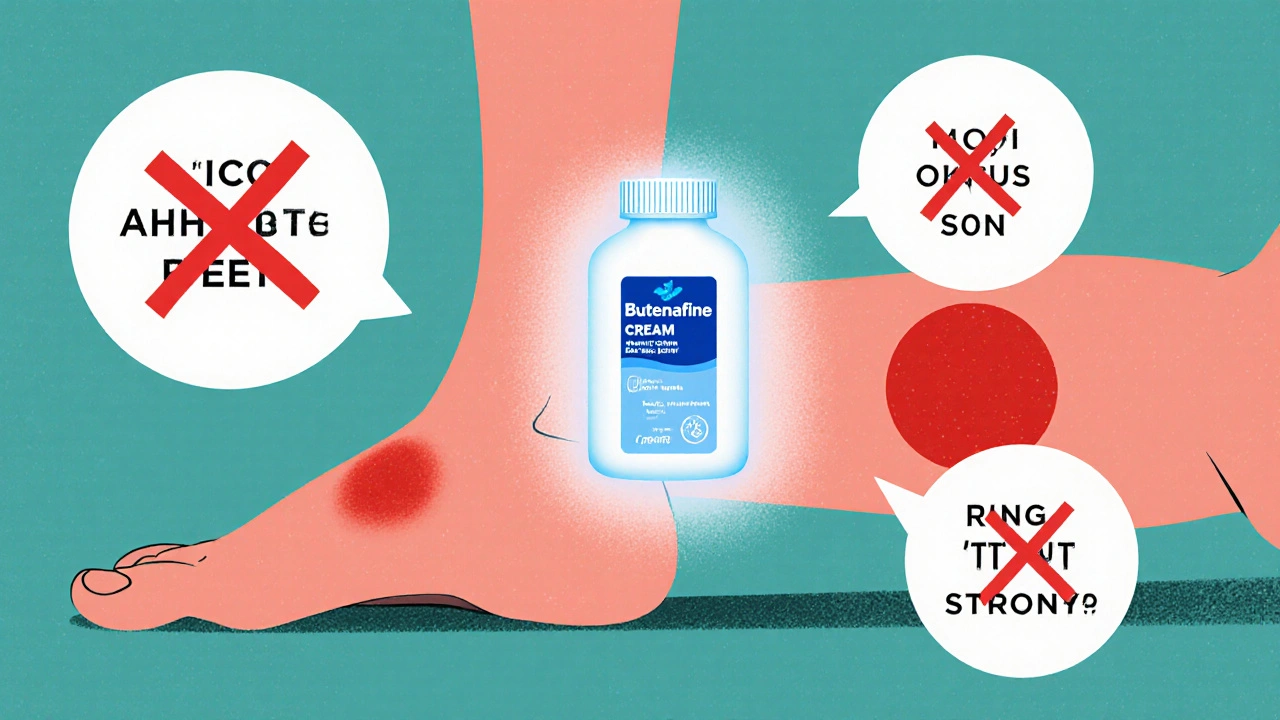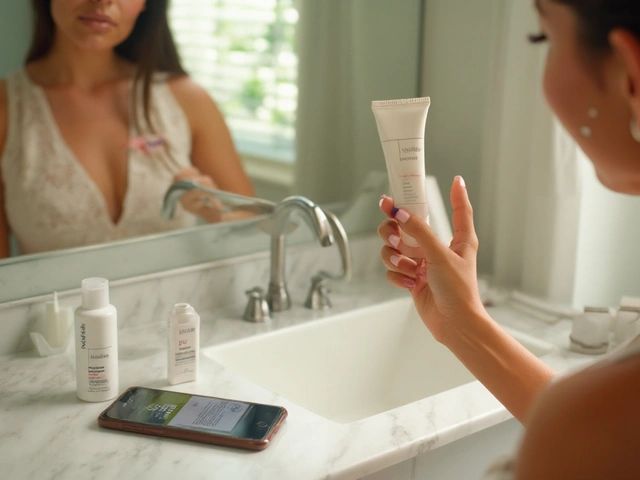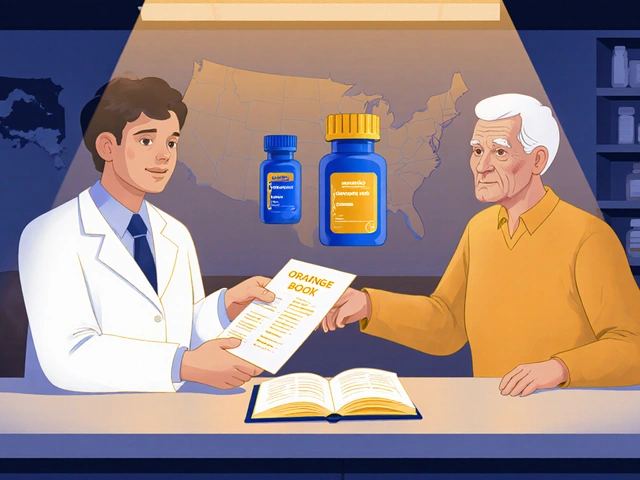
Butenafine is one of those antifungal medications that shows up on pharmacy shelves with little fanfare, yet works better than most people realize. It’s used for athlete’s foot, jock itch, ringworm - the common skin infections that make you want to scratch and hide. But there’s a lot of confusion around it. You’ve probably heard things like ‘it’s too strong’ or ‘it doesn’t work on nails’ or ‘it’s just a fancy version of clotrimazole.’ Most of that isn’t true. Let’s cut through the noise.
Myth 1: Butenafine is only for athlete’s foot
That’s not right. Butenafine is approved for three types of fungal skin infections: tinea pedis (athlete’s foot), tinea cruris (jock itch), and tinea corporis (ringworm). The active ingredient targets the fungus by disrupting its cell membrane. It doesn’t care which part of the body it’s on - as long as it’s a fungal infection on the skin, it works. Dermatologists in Sydney and Melbourne regularly prescribe it for ringworm on the arms or legs in kids, not just sweaty feet. The packaging says ‘for athlete’s foot,’ but that’s just the most common use. The science doesn’t limit it.
Myth 2: Butenafine causes serious side effects like oral antifungals
This is a big one. People hear ‘antifungal’ and think of liver damage, nausea, or drug interactions - the kind of risks tied to pills like terbinafine or itraconazole. Butenafine is topical. Less than 2% of what you put on your skin gets absorbed into your bloodstream. That’s why you don’t need blood tests or liver monitoring. The only side effects you might see are mild: redness, itching, or burning at the application site. These usually go away in a day or two. If you’ve had a bad reaction to a cream before, patch-test it behind your ear first. But for 95% of users, it’s as safe as a moisturizer.
Myth 3: Butenafine doesn’t work on nail fungus
It’s true that butenafine isn’t FDA-approved for nail fungus. But that’s not because it doesn’t work - it’s because nail infections are harder to treat. The fungus lives under the nail, and most topical creams can’t penetrate deeply enough. That’s true for all topical antifungals, not just butenafine. Oral meds like terbinafine are still the gold standard for nails. But if you’ve got early nail discoloration or mild thickening, some doctors use butenafine off-label as a first step - especially if you can’t take pills. Apply it daily, file the nail down, and be patient. It won’t fix advanced cases, but it can stop mild cases from getting worse.
Myth 4: Butenafine is just as good as clotrimazole - no difference
They’re both antifungals, but they’re not the same. Clotrimazole is a broad-spectrum azole that stops fungus from making ergosterol, a key part of its cell membrane. Butenafine is an allylamine. It blocks an earlier step in the same process, which makes it faster and more effective at killing the fungus, not just stopping it from growing. A 2023 study in the Journal of the European Academy of Dermatology and Venereology showed butenafine cleared athlete’s foot in 78% of patients after two weeks. Clotrimazole? 59%. Butenafine also has a longer-lasting effect. You apply it once a day for two to four weeks. Clotrimazole often needs two applications a day. That’s less hassle, and better compliance. If you’ve tried clotrimazole and it didn’t fully clear your infection, butenafine might be the upgrade you need.

Myth 5: Once the itching stops, you can stop using it
This is the #1 reason fungal infections come back. You feel better after three or four days. The redness fades. The itch is gone. So you toss the tube. Big mistake. Fungi are sneaky. They’re still alive under the surface, even when you can’t feel them. Stopping early lets them regrow. Butenafine needs to be used for the full course - usually four weeks for athlete’s foot, even if you feel fine after two. A 2022 follow-up study tracked patients who stopped early versus those who finished the full treatment. The early stoppers had a 62% recurrence rate. The full-course group? Only 14%. Think of it like antibiotics for a sore throat. You don’t stop because you feel better. You finish the job.
What butenafine actually does - and doesn’t do
Butenafine is not a miracle cure. It won’t heal cracked skin caused by long-term infection. It won’t stop you from re-infecting yourself if you keep wearing the same socks or walking barefoot in the gym. It’s a targeted tool. Use it right, and it kills the fungus. But you still need hygiene: dry your feet thoroughly, change socks daily, use antifungal powder in shoes, and don’t share towels. If your infection doesn’t improve after four weeks, or if it spreads, see a doctor. You might need oral treatment, or it might not be fungal at all.
Who should avoid butenafine?
Almost no one. It’s safe for adults, teens, and even children over two years old. Pregnant women should check with their doctor first - but topical butenafine is considered low risk. People with severe eczema or broken skin should avoid applying it to open wounds. If you’re allergic to any ingredient in the cream, skip it. Check the label: butenafine hydrochloride, glycerin, white petrolatum, and cetyl alcohol are the main ones. If you’ve had a reaction to any antifungal cream before, test a small patch first.

How to use butenafine correctly
- Wash and dry the affected area completely - moisture feeds fungus.
- Apply a thin layer of cream once daily. Don’t rub it in hard; just cover the area and a little beyond.
- Use it for the full course - four weeks for athlete’s foot, even if symptoms vanish.
- Don’t cover with bandages unless your doctor says to.
- Wash your hands after applying.
Store it at room temperature. Don’t freeze it. Keep it away from kids. If you miss a day, just apply the next day - don’t double up.
What to do if butenafine doesn’t work
First, make sure you’re using it long enough. Most people give up too soon. Second, check your hygiene. Are your shoes clean? Do you wear the same socks two days in a row? Third, confirm it’s actually a fungal infection. Psoriasis, eczema, and even allergic reactions can mimic ringworm. A doctor can do a simple skin scraping test under a microscope to be sure. If it’s fungal and butenafine failed, oral terbinafine is the next step. It’s more effective for stubborn cases. But don’t jump to pills without ruling out other causes.
Can I use butenafine on my scalp?
No. Butenafine is formulated for skin, not the scalp or hair. Scalp fungal infections (like tinea capitis) require different treatments, often oral antifungals. Using butenafine on your scalp won’t work and could irritate your skin. If you have flaking or itching on your scalp, see a doctor.
Is butenafine available over the counter?
Yes, in Australia and many other countries, butenafine cream is available without a prescription. Look for brands like Mentax or generic butenafine hydrochloride 1% cream. Always check the label to confirm the concentration is 1% - that’s the standard for skin infections.
Can I use butenafine with other creams or lotions?
Yes, but not at the same time. Apply butenafine first, wait at least 15 minutes, then apply moisturizers or other topical treatments. Mixing them can reduce its effectiveness. If you’re using a steroid cream for eczema, talk to your doctor - combining antifungals and steroids without supervision can mask infections.
Does butenafine work on yeast infections like candida?
It can, but it’s not the first choice. Butenafine is most effective against dermatophytes - the fungi that cause athlete’s foot and ringworm. Candida is a different type of fungus. For yeast infections, clotrimazole or miconazole are more commonly recommended. Butenafine may help in mild cases, but if symptoms persist, you’ll need a different treatment.
How long does it take for butenafine to start working?
Most people notice reduced itching and redness within 3-5 days. But visible improvement - like skin returning to normal color and texture - takes longer. Don’t judge effectiveness by how fast you feel better. Stick to the full four-week course. The fungus is still there even when you don’t feel it.
Final takeaway
Butenafine isn’t magic. But it’s one of the most underrated tools we have for common fungal skin infections. It’s fast, safe, and works better than most OTC options. The myths around it - that it’s too strong, doesn’t work on nails, or is just like clotrimazole - are holding people back from using it properly. Use it as directed. Finish the course. Keep your skin dry. And if it doesn’t clear up, don’t assume it’s a myth about the drug - it might just be time to see a doctor.
Rashmi Mohapatra
butenafine is overhyped lol i used it for my toe fungus and it did nothing, my cousin in delhi said the same thing, just waste of money
Abigail Chrisma
Really glad someone broke this down clearly. I used to think it was just a fancy clotrimazole until I read the study comparing clearance rates. The fact that you only need one daily application made such a difference for me - I actually finished the full course for once. Also, the hygiene tips? Game changer. I started washing my socks in hot water and switching shoes daily. No recurrence in 18 months.
Ankit Yadav
My dermatologist in Bangalore recommended this after I kept getting ringworm from the gym. I was skeptical because the packaging says athlete’s foot but she said the science doesn’t care where it is. Used it for four weeks like she said. Skin looked normal after two but I kept going. Didn’t come back. Also don’t use the same towel for face and feet. That’s how it spreads. Simple but nobody tells you.
Meghan Rose
Okay but did you even read the FDA label? It’s NOT approved for nails. People are going to skip oral meds because of this and end up with ruined nails. This isn’t ‘off-label’ advice - it’s dangerous misinformation. I’ve seen three patients with nail damage because they thought cream = cure. Please stop.
Steve Phillips
Oh my GOD. Another ‘butenafine is magic’ post. 😭 The ‘78% clearance’ stat? That’s from a tiny, industry-funded pilot study with 87 subjects. Meanwhile, terbinafine has 12+ years of RCTs with 10,000+ patients. And you’re telling people to skip oral meds because ‘it’s safer’? Please. This isn’t ‘underrated’ - it’s a marketing gimmick wrapped in pseudoscience. Also, ‘apply once daily’? That’s because the company doesn’t want you to buy more tubes. They’re not helping you - they’re profit-maximizing. 🤡
Rachel Puno
You guys are doing amazing - just keep going. I used this after my second recurrence and I was ready to give up. But I followed the four-week rule. And I started putting antifungal powder in my sneakers. And guess what? I’m fungus-free. You got this. One day at a time. 💪
Clyde Verdin Jr
MYTH #6: Butenafine doesn't cause weird dreams 😂 I woke up screaming because I thought I was a mold spore floating in a shower. I'm not even joking. I stopped it after 3 days. Also, why is everyone so obsessed with this cream? It's just a lotion. I've had better luck with tea tree oil and sheer willpower. 🙃
Key Davis
Thank you for the meticulously researched and clinically grounded exposition. The distinction between dermatophyte and candidal infections is particularly well-articulated. The adherence metrics cited from the 2022 longitudinal study are compelling and align with current guidelines from the American Academy of Dermatology. I would only add that, in pediatric populations, the use of butenafine should be accompanied by parental education regarding environmental decontamination - particularly in shared living spaces. The pharmacokinetic profile supports its safety profile, and the behavioral component - consistent application - remains the most significant determinant of therapeutic success.






Write a comment